Revelstoke ~ Stoke Beach, Devon.
Client : Private.

Situated in the civil parish of Newton and Noss, Revelstoke is a restored farmhouse high up on the hills overlooking the scenic South Devon coastline. In the past we have carried out several small landscaping projects to this property and this is one of them. It involved constructing an apron at the end of a steep tarmacked driveway leading onto a gravelled area in front of the house.

Due to the steepness of the incline where the gravel met the tarmac drive, the gravel wasn’t staying in place and it was getting problematic to drive over this section as the underlying sub-base was washing away.

It was agreed that we would put in an apron that would extend this part of the driveway down to a section of gravel that was more or less level, and the apron was to be constructed out of reclaimed granite. But first we had to source some granite suitable for the job and this was found at a local reclamation yard.


This pile consisted of some hefty lumps of granite, all varying lengths and thicknesses with depths of up to 9 inches to 12 inches (225mm – 300mm). We were going to need a machine just to help lift the granite out from the pile.

Once we had sorted out enough granite, it was placed onto pallets, wrapped up in plastic and loaded onto a low loader for delivery to site.

Once delivered to site, another machine off loaded the pallets, tracked down the driveway and placed them on the gravel next to where the new apron was going to be situated.


In total there was roughly fourteen tons of reclaimed granite.

Our next task was to mark out the area for the ground that had to be reduced down to accommodate the reclaimed granite which was then dug out by machine.




The next thing we did was to set out and lay the granite edging for the new apron.


This was laid down on a bed of lean mix concrete.

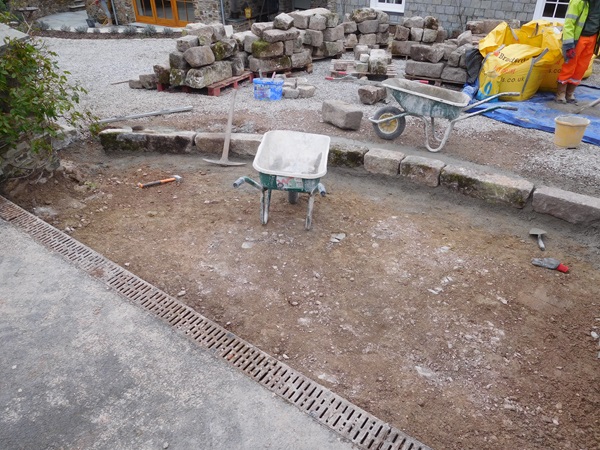
The reclaimed granite originally came from the Royal William Yard in Plymouth and had once formed the roads within it. The Royal William Yard was constructed between 1826 and 1835 and designed by renowned architect Sir John Rennie naming it after King William IV, the Sailor King. Much of it built by Napoleonic French prisoners of war, it served as the major victualling depot for the Royal Navy up until 1992 where the M.O.D. release it to the Plymouth Development Corporation for re-development. During that development much of the granite that had been laid down for centuries became surplus to requirement. The Royal William Yard is Grade I listed and remains the largest and finest example of its kind in Europe.

Now that the edge of the new apron was set in we started laying the rest of the granite in the ground and because the granite was all different sizes it was placed down in a random inter-locking pattern, starting from the bottom and working up.



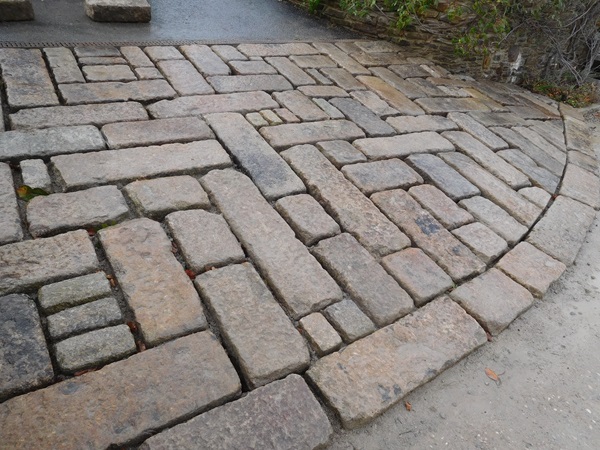
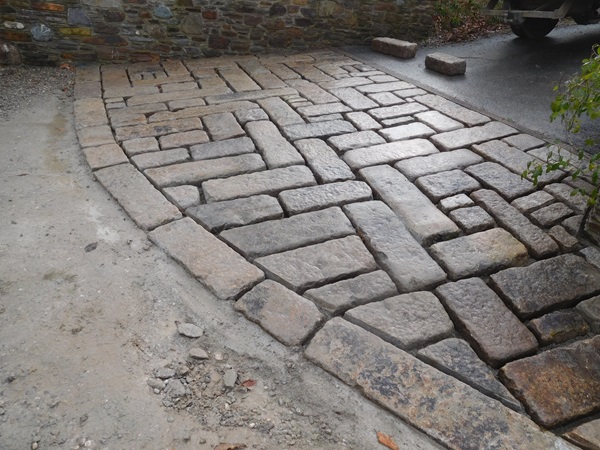

Now all those were set down it was time to started pointing in all the joints.
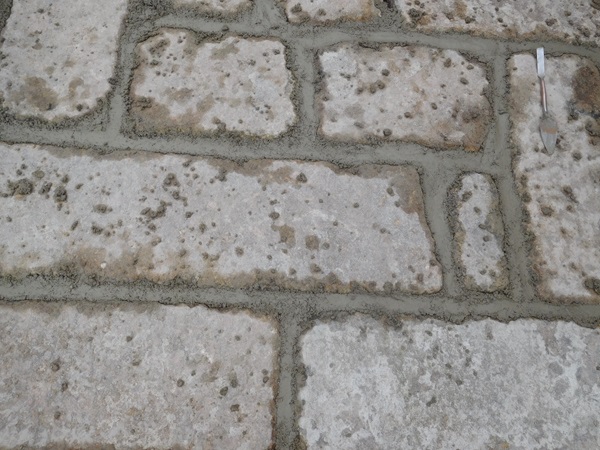
We used a standard mix consisting of three parts coarse sand to one part cement.

After the jointing had set the apron was given a good clean down.

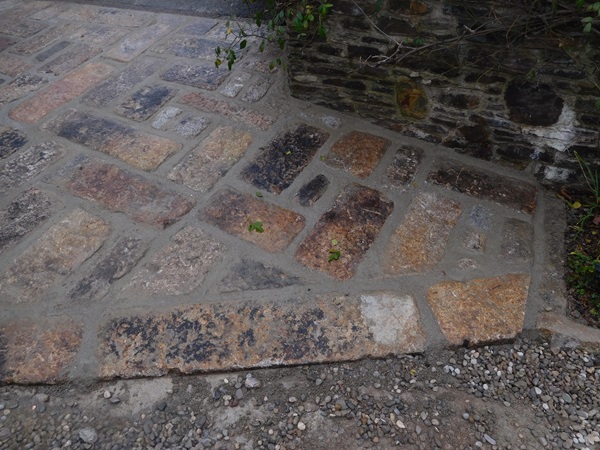
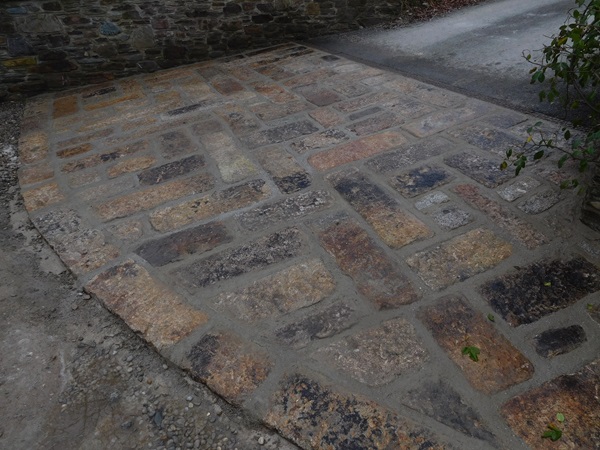
On completion of the work the gravel was re-instated around the edges.


There is something to be said about reclaimed granite as its character far exceeds anything else on the market today and hopefully these granite setts will still be in the ground for a few centuries more.
Another project we have completed at this property involved paving to the rear garden and you can see this if you click here.


